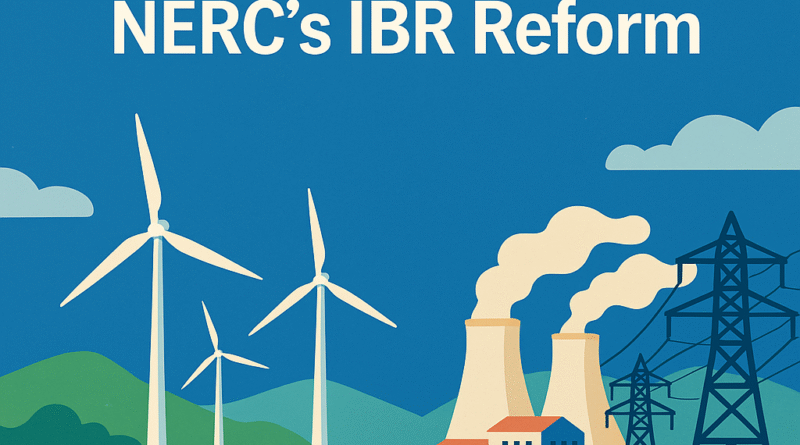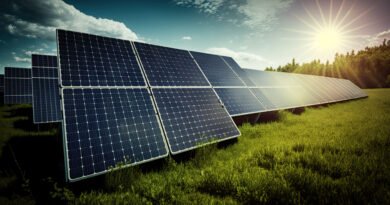What Asset Owners Must Know About NERC’s IBR Reforms
Published by GO-IBR.com Research
📅 May 6, 2025
🧭 Executive Snapshot of the New Rules and New Risks:
As solar, storage, and hybrid IBRs rapidly fill the interconnection queues of U.S. power markets, NERC and FERC are no longer watching from the sidelines. In fact, they’ve just changed the playbook.
Welcome to the new era of compliance for Inverter-Based Resources (IBRs). With newly minted GO-IBR and GOP-IBR registration categories, thousands of MWs of previously “under-the-radar” generation are now being pulled into the NERC reliability framework. If you thought your 10 MW solar-plus-storage site was too small to worry about—think again.
In this note, the GO-IBR.com Research team breaks down:
✔️ What the new rules are
✔️ How registration gets triggered
✔️ What asset owners will need to do
✔️ The key deadlines you shouldn’t miss
✔️ And how firms like SYSO are helping navigate the storm
⚙️ So, What Are These New Rules?
Let’s rewind. For years, many IBRs operated outside the Bulk Electric System (BES) threshold—typically 75 MVA—and were never asked to play by the big grid rules. But then came the grid events, the trip-outs, the fire risks, and the realization: we need eyes on everything.
That led to FERC’s approval in June 2024 of two new NERC registration categories:
- GO-IBR: Generator Owner – Inverter-Based Resource
- GOP-IBR: Generator Operator – Inverter-Based Resource
These apply to both standalone and aggregated IBRs (solar, storage, hybrids) that don’t meet BES thresholds but still matter—due to size, location, or system criticality.
⚡ Translation?
If your asset contributes to grid reliability (or could impact it during a disturbance), you might be nominated for compliance—even if it’s only 5 or 10 MW.
🚨 What Triggers Registration?
Under the new structure, there are three main paths to registration:
| Trigger Type | Who Pulls the Lever | What It Means |
|---|---|---|
| 1. Nomination by a Planning Coordinator | They say your asset impacts planning models | You’re in |
| 2. Nomination by a Transmission Operator | Your asset affects local ops or grid security | You’re in |
| 3. Self-Identification | You assess your asset meets GO-IBR/GOP-IBR criteria | You’re voluntarily in |
What Does Registration Actually Require?
Once you’re in the registry, it’s not a light lift. Your project is now on the radar—and must perform like it.
Your To-Do List Just Got Longer:
- Submit accurate inverter models and system diagrams
- Comply with PRC, TOP, and EOP reliability standards
- Install telemetry systems for real-time data capture
- Train staff, document processes, and prep for audits
- Be ready for event reporting and disturbance monitoring
And yes—this could apply to operating assets retroactively. If your unregistered project is deemed out of compliance, penalties could follow.
📅 What’s the Timeline?
Formal deadlines vary, but the smart money moves early. Here’s what you should be doing now:
| Action | Recommended Timing |
|---|---|
| Review asset eligibility for nomination | Immediately |
| Establish contact with your Planning Coordinator or TO | Q2 2025 |
| Begin modeling and system documentation | Q2–Q3 2025 |
| Evaluate SCADA, RTU, and telemetry upgrades | Ongoing |
| Design compliance program and audit readiness | Before Q4 2025 |
🎯 Bottom Line
If you own, operate, or develop IBRs, the question is no longer if you’ll be regulated. It’s how ready you are when it happens.
The good news? You don’t have to go it alone. Whether you partner with SYSO or another expert firm, now’s the time to align your infrastructure and reporting practices with the new rules—before the audit window opens.
📘 Want the Full Analysis?
Download the GO-IBR.com Research Paper on NERC Regulatory Compliance Consulting Service Providers – North America from your Account section at www.go-ibr.com.
This report breaks down the top partners, service tiers, and strategies for compliance success—especially for newly registered GO-IBRs.




